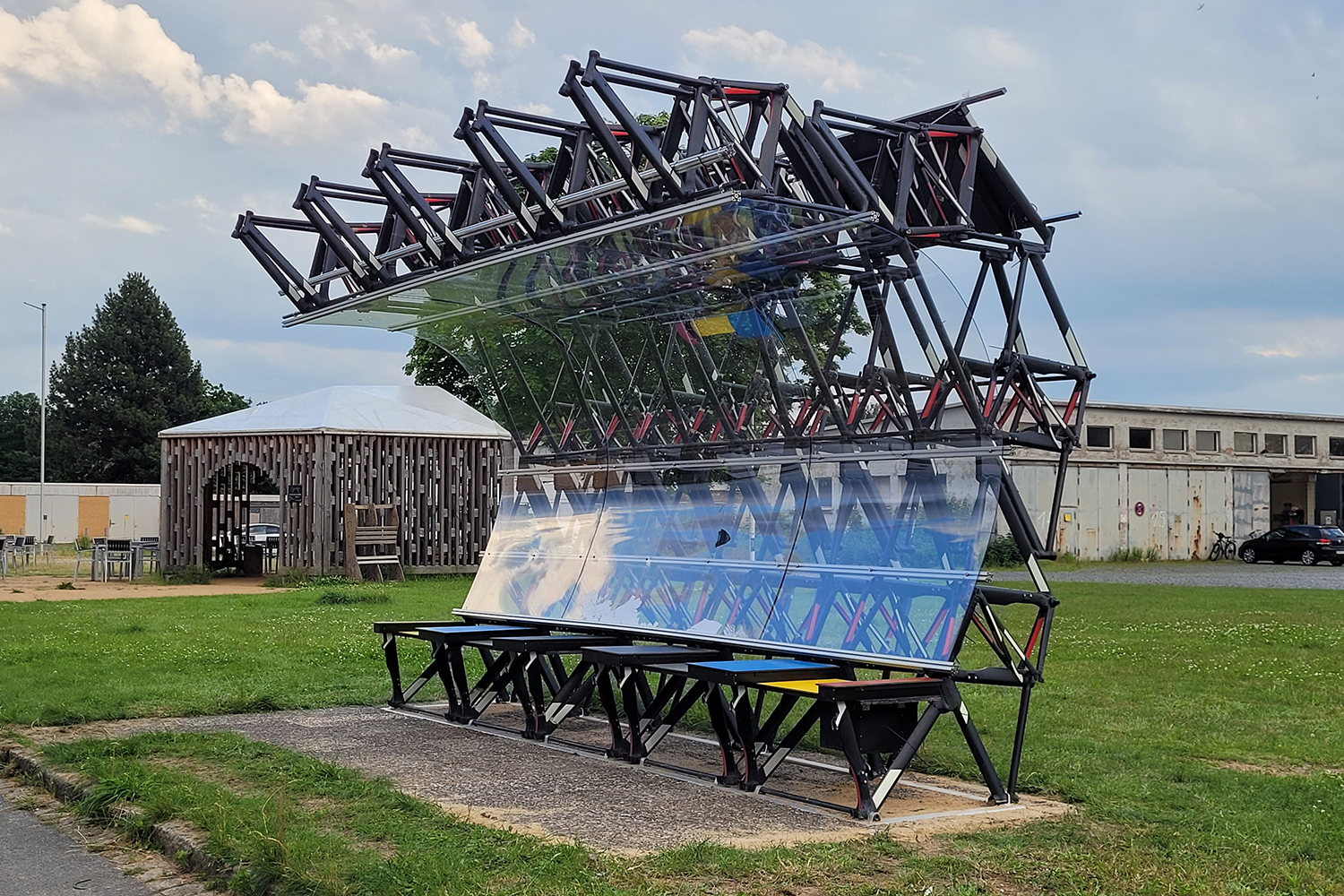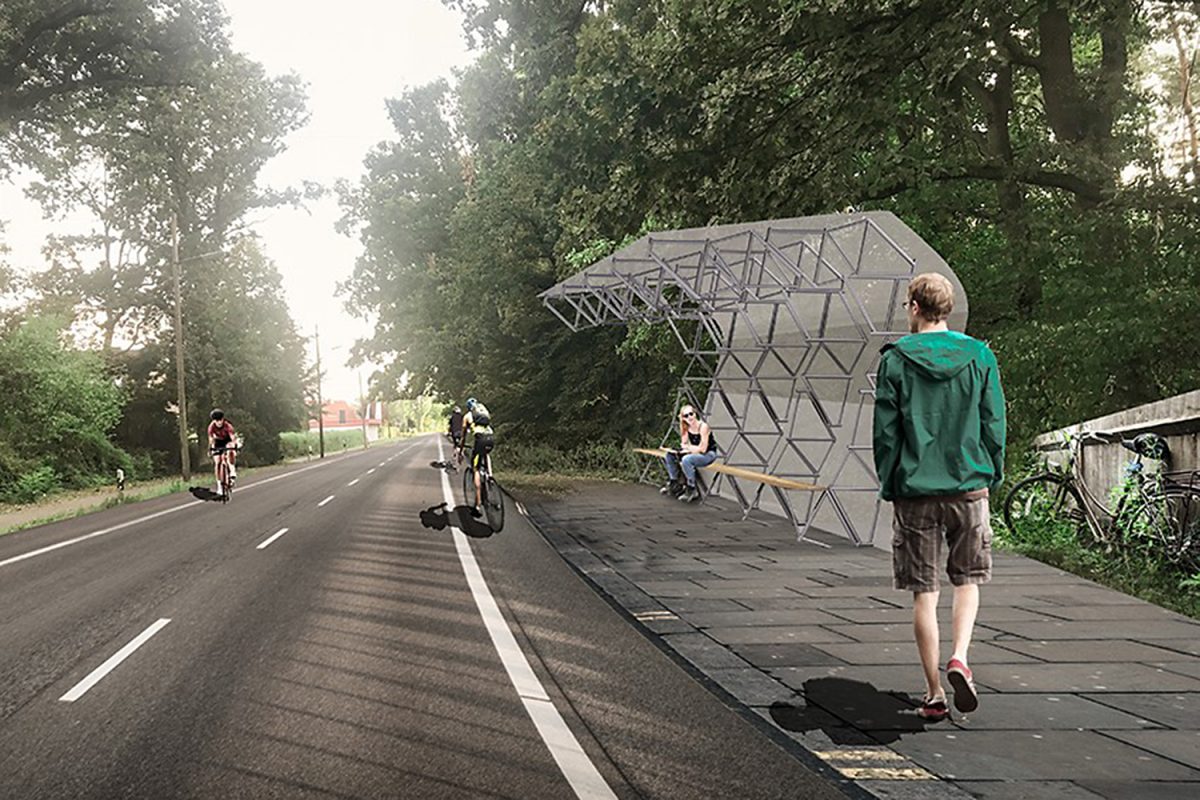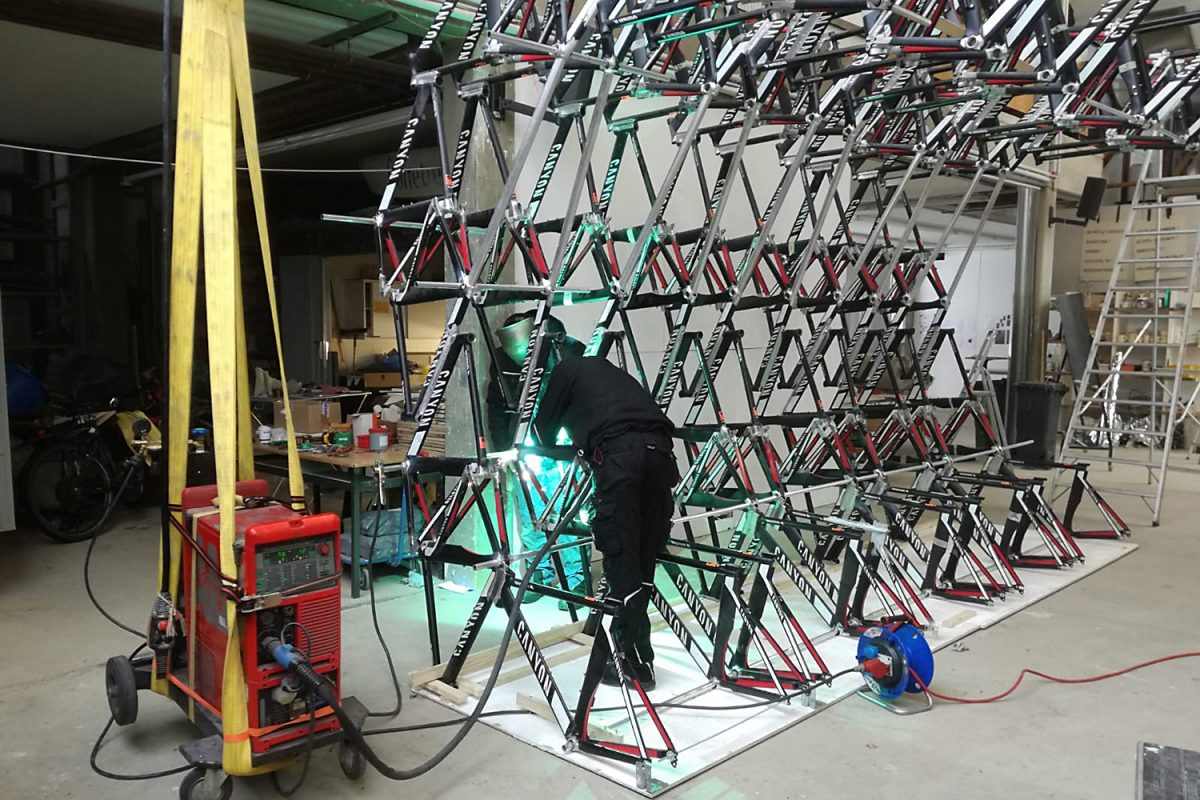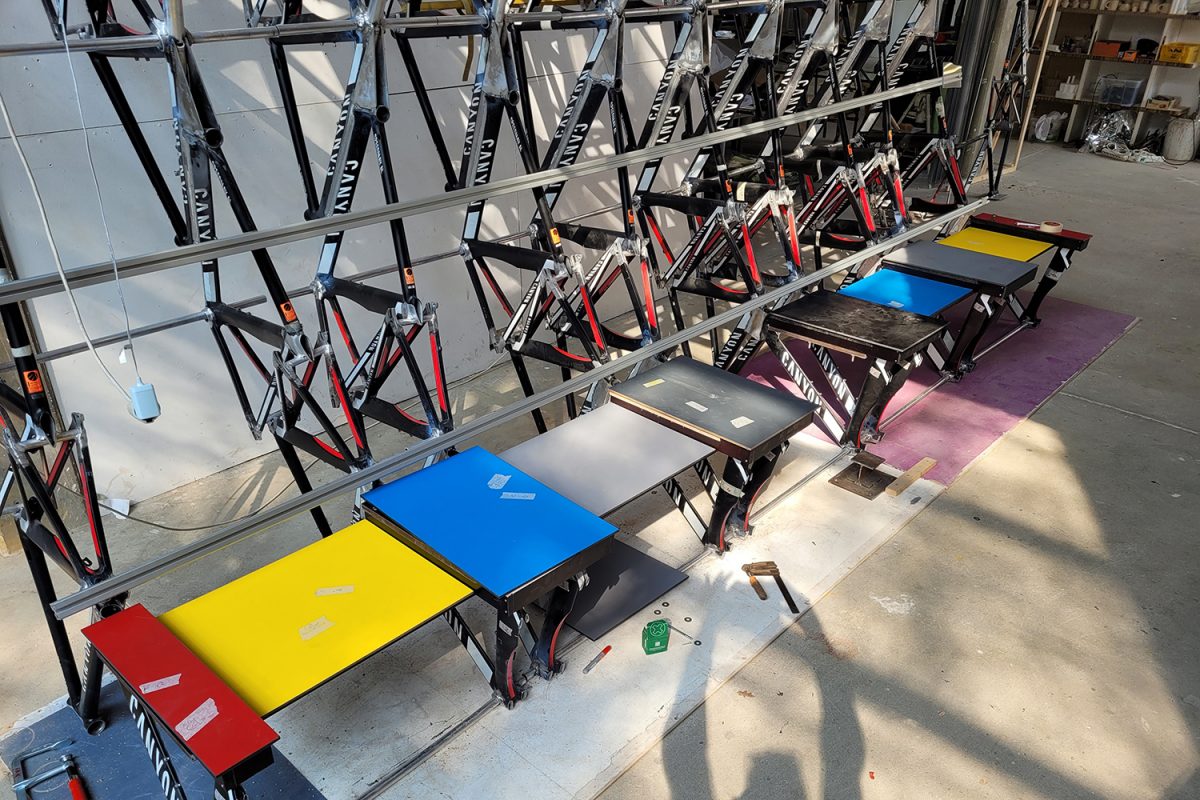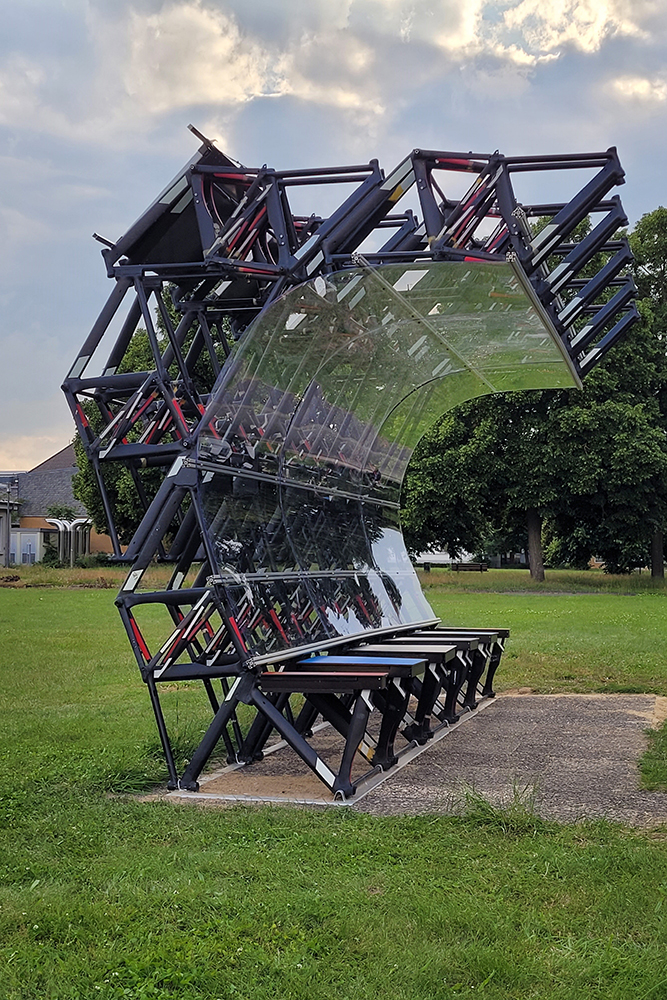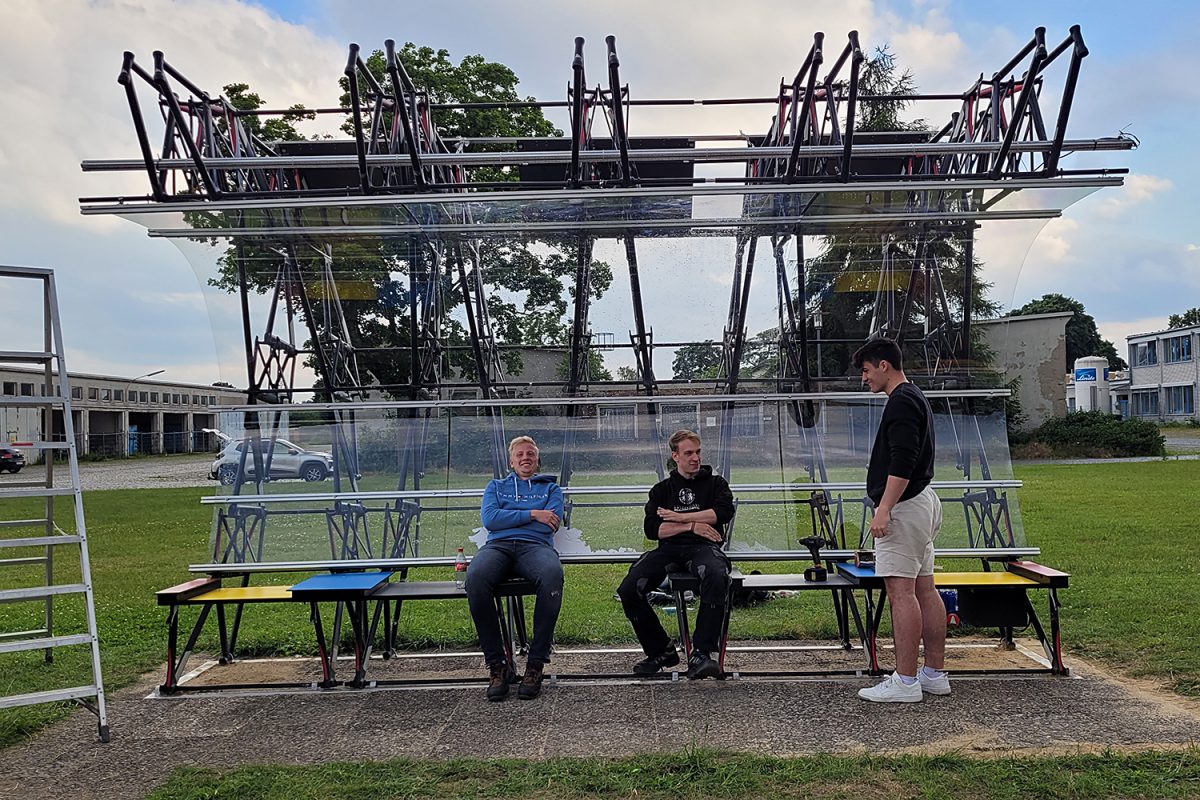post-fossil mobile: architecture made of bicycles A bus stop at the north campus
In the middle of the north campus of Technische Universität Braunschweig, opposite the lecture hall building, there is a new covered half-timbered construction. What is this filigree building at Bienroder Weg 84? Is it a bus stop or rather a work of art? This question has probably already been asked by many. The structure near the wooden pavilion was built by students and staff of the Institute for Architecture-Related Art. What is it all about?
Spaces of waiting
Many people find waiting difficult, as if we lose time when we wait. But waiting can also be a gift of time, an opportunity to take a break, chat or read. The quality of the spaces and places where we spend time is very important. “The classic bus stop shelter only formally fulfils the requirements for a tolerable stay and thus corresponds to the general understanding of waiting as boring inactivity,” says Professor Folke Köbberling, director of the Institute for Architecture-Related Art (IAK). “As an alternative, a redesigned waiting space could enhance or even transform the time spent waiting.”
The bus stop on the North Campus is a good example. The unusual shelter at Peterskamp in Querumer Forst was originally intended to be a standing structure. The architecture students had submitted their concepts for the site as part of an impromptu design competition.
The art object corresponds to the auditorium building
The aim was to create playful designs for a new type of space for spending time, moving around or waiting. Georg Flotho’s concept was selected from a large number of entries. His idea was to create a shelter out of discarded bicycle frames, giving them a new purpose. By connecting several frames together, a kind of stable framework was created, an architecture of bicycles. And a work of art that, according to Michael Zwingmann, artistic associate at the IAK, fits in perfectly with the lecture theatre building on the North Campus.
90 bicycle frames were used to build the shelter. The team of students and staff, led by Professor Folke Köbberling and Michael Zwingmann, could not use old frames. “That would have been too time-consuming and costly due to the different shapes, and it would have been almost impossible to calculate the statics,” explains Michael Zwingmann. But the new, standardised frames provided free of charge by Canyon were from a discontinued series. This is in line with the institute’s philosophy of working with existing materials that would otherwise end up as waste.
Stress test passed
The structure consists of five A-shaped units that were welded together with the help of the Braunschweig-based company Alu-Gräbner. They were then subjected to a load test by Professor Klaus Thiele of the Institute for Steel Construction.
The coloured plastic wood fibre panels used to make the benches came from Gräbner’s waste bins, and the concrete slabs in the floor area had previously been on the forecourt of a church for 70 years. To keep students and staff dry at the bus stop, the project team installed plexiglass to protect against rain. Lighting for the dark hours has also been provided. The small photovoltaic system developed by Axel Schwietale and installed on the roof generates the electricity for the lighting.
Michael Zwingmann believes that the bus stop on the North Campus has found an ideal location: “It’s just waiting to be connected.”

